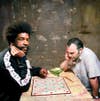Michael Lewis: Almost Famous
A good portrait seduces the viewer. When I set up a photograph, I ask myself: “Is the viewer going to...
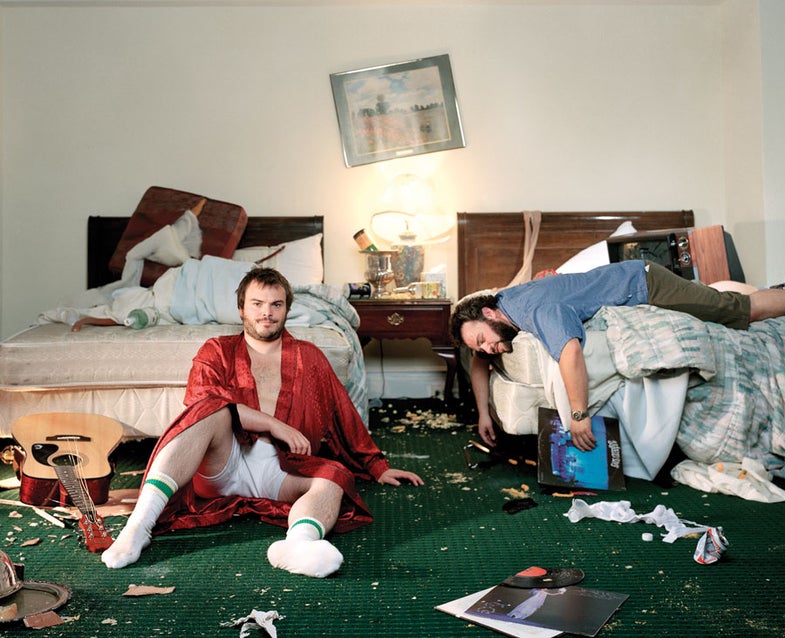

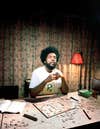
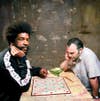
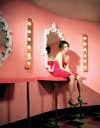
Tina Fey
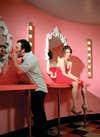

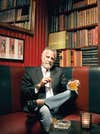
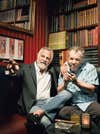

A good portrait seduces the viewer. When I set up a photograph, I ask myself: “Is the viewer going to buy it?” That window is real, light’s streaming through, it looks amazing—but of course I made it primarily because it was easier than finding it. You’re always making choices about how to control the environment, whether you’re on a set or not. It’s a challenge to reveal much about a subject in a single frame. It’s almost impossible, though, not to reveal something about yourself. Portraits can tell you a lot about a photographer.
When I started working commercially my subjects were mostly solos—until I jumped into the frame myself. The first time I did that I was photographing David Hasselhoff. It was actually my assistant, Brian Delaney, who said, “Hey, you gotta get in this!” At that time I was pretty new to shooting celebrities, and Hasselhoff took to the idea quite warmly. The proof sheet is very playful, with him resting his elbow on my head, that kind of thing. Not long after that I just started stepping into these things without always telling people. I started doing it with all my shoots, celebrities or not. And people have mostly been OK with it. Over the years I just started to quickly explain, “Hey, I do this with all my shoots.” But I do feel very self-conscious, as if I’m wasting their time. I realize that they know it’s just for me, this thing I do, and they don’t mind. Still, I cut it off after two or three shots out of respect for the person’s time.
I don’t really know how other photographers deal with celebrities. I never really assisted anybody who did what I do. Many of my subjects thank me because apparently I give a lot of direction. I walk them through the shoot. I’m very quick, too, even for the 15 minutes you typically get with a celebrity. But if they dig you, you can push that 15 minutes to 20. I just constantly push; I think every photographer must say “just one more” at least 100 times.
But there’s a point where you realize you’ve bled the subject; they’re done. It’s got little to do with the number of frames you shoot. There’s this moment when I feel like the subject is saying, “Doesn’t this asshole have it yet? How many shots are you going to take here?” And I just sense them pulling back. I think every photographer must feel that moment.
People have been pushing me toward integrating my jumping into the frame in my editorial portraits into my self-portraits, which are a long-term, personal project and actually the work I’m really proud of. In a way, the jumping-in pictures are at least as realistic as my mundane-looking self-portraits. The self-portraits are the most poignant; you really see a regular guy who was single for a very long time. They’re so ordinary, but he’s also alone. And it makes a very loud silence.
I can see some similarity in tone between my self-portraits and my editorial photos, especially the ones where I put myself in the frame. But the intent of each is very different. The on-set photos are for fun; they’re like getting visual autographs. The self-portraits I consider a serious body of work, and I’m thinking they’ll stay separate, even though as my life has changed, I’ve included my partner and our son in them.
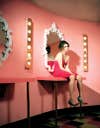
Tina Fey
Aesthetically, it’s all just me; I don’t know any other way. Put it this way: I’m always amazed when you go into a coffee shop and they have bad coffee. Or if you run a bakery and your cookies suck. That blows my mind. If this is what you do, you’d better do it with absolute dedication.
So that’s how I think about my work. This is what I do, and I do it in a certain way, according to what I like and the ideas I developed all the way back in grad school (I studied fine art at the San Francisco Art Institute). If you look at my self-portraits and my editorial portraits, they share a certain feeling. And over time they’ve changed. The photographs of Questlove and the World’s Most Interesting Man are similar, but the latter I think are more relaxed, have a different kind of energy that I’ve acquired in recent years.
Styles come and go. I finally have been doing this long enough that I’m starting to see many cycle through again. Like the crazy digital oversharpening—how Photoshopped things look. That’s kind of come and gone. Right now things are very bright, poppy. People don’t think of me when they think of that as much. You just have to do what you do well.
There’s a part of me that idealistically wants to be authentic. But that’s also realistic: If you’re not authentic—wow, man, there’s a lot of talented people out there. So it’s good business to be authentic. And basically just be proud of your pictures.
Bob Dylan wrote a few albums when he was younger—his whole career is stellar, but there was a stretch around 1965, ’66, when he made his most powerful albums in a very short period of time. And he was asked once, “Does it upset you to think that you’ll never be able to write_ Blonde on Blonde_ and Highway 61 Revisited again?” And he said something like, “Well, you can’t do something forever. I did it once; I can do other things now.” You can only do what feels true to you at the time.
I tend not to shoot celebrities any differently than I do anyone else, and I think that can help build rapport and in the end get a good picture. Early on in my career, when I was first in L.A., you were judged a lot (and still are) by who you’ve photographed, and I think I resisted that. The self- portraits helped me level the playing field, too, because I was photographing myself in ways that did not do me any favors. When I was doing online dating, girls would say, “Hey, if you’re a photographer, you must have a website.” My mother was mortified at some of the pictures I had on there, especially the earlier ones. I would really let my belly just hang out. But I was very proud of these pictures. They helped me see just how much everybody is the same.
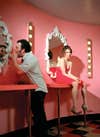
Jack Black was one of my first shoots when I was new to L.A. I was working, but I was new. Jack Black was a pretty new guy, too. Beyond Tenacious D he hadn’t done much yet. He came over to my apartment for a shoot for Detour magazine, which gave me great access to people and great photo spreads but had no money. So I always shot in my little one-bedroom apartment. I lived in Beechwood, below the Hollywood sign, where there was a little stretch where you could pretend it was New York for like a microsecond.
Comedians can be dark people, and he was kind of pensive. At one point he was in the bathroom in his underwear, his gut’s hanging out—very much like the self-portraits I was doing at the time—not the most complimentary physically, but it was good, and it was funny. And I had a little kitten, who’s still with me to this day—he’s 13 now. And the kitten jumped on the counter while Jack Black was shaving. It made an awesome picture.
Later that night I got a call from his publicist, who was a powerful dude in Hollywood. Publicists are a huge thing in this industry. They are powerful people here, and magazines are somewhat at their mercy. They want the celebrity in the magazine, so they more or less conform to the image the publicist and his client are trying to project at any given time. He didn’t want that picture to run. I gave him my word that I wouldn’t run it. And he wasn’t happy with that. He wanted the negative. And I’m like, “Dude, I’m giving you my word”— I always stick with my word. Then a couple days later Rolling Stone comes out: Tenacious D on all fours wearing a diaper getting spanked with a guitar by Kyle Gass (the other guy in Tenacious D). I couldn’t believe it.
Cut to about eight years later, Jack Black’s on top of his game and I’m called in to shoot him for the cover of Entertainment Weekly. So I printed that photograph and brought it to the shoot. And they liked it a lot. Everybody felt good that day. We all had stepped up in our careers.
Tina Fey was terrific to work with. She was the ideal subject: smart, witty, totally into it. The whole shoot was very collaborative. She came up with one shot where she’s writing in lipstick on the men’s room mirror. It meant a lot to her at the time.
After 12 years in New York, we just moved back to L.A. about eight months ago—with a 15-month-old. So things have been different from when I was shooting Jack Black in my apartment. Ironically, recently I’ve been shooting a lot for the New York Times. They put very good people in front of my camera. And they’re throwing me everybody.
I’m proud of the editorial photos I make. It was always important to me that my art school buddies would look at my website and think, “Man, Lewis is still making totally cool fucking pictures.” I always wanted to kind of keep it cool. And it is an interesting thing for me, looking back, to still be photographing these portraits and realizing that no, I haven’t sold out.
